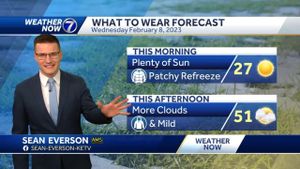Japan is facing significant challenges as heavy snowfall has led to widespread highway closures across several regions. The severe winter weather has triggered urgent measures by transportation authorities to prevent traffic accidents and minimize the risk of stranded vehicles.
Beginning on February 7, many key highways, especially those connecting major cities, were affected. The National Highway Traffic Management Center reported closures on multiple expressways, including the Meihan Expressway. Authorities emphasized these decisions were made as precautionary measures to avoid major traffic jams and safeguard motorists.
According to local meteorological authorities, this year's snowfall has reached historically high levels, with significant accumulation reported across various regions. The snowfall has been described as unprecedented, prompting concerns about avalanches and dangerous ice formations on road surfaces. "The snowfall has reached levels not seen in recent years, with risks of avalanches and road surface freezing," they stated, highlighting the urgency of the situation.
By February 8, the impacts extended beyond highway closures, affecting local public transportation systems. Trains were running late, with services interrupted due to the inclement weather. Many domestic flights faced delays and cancellations, with airports reporting operational difficulties linked to adverse weather conditions. "We ask all residents to avoid unnecessary travel during this extreme weather," local government officials issued as advice to the public.
Particularly, the areas around Mie, Niigata, and Tottori were among the hardest hit. The Tottori Prefecture, for example, recorded heavy snow accumulation, resulting in the temporary closure of significant roads leading to and from the region. With the forecast predicting continued snowfall, residents are advised to take precautions.
Highway closures included parts of the Hokuriku and Tokai areas, with specific stretches blocked off to mitigate risks to travelers. The preventative approach appears necessary to facilitate road clearance efforts, which are complicated by the high volumes of snow reported on February 7 and February 8.
Other regions, like Gifu Prefecture, are also seeing similar weather patterns. Roads remained shut down due to snow as authorities worked round the clock to clear major obstacles. The situation evolved rapidly, with various advisories issued throughout the day highlighting changes in travel conditions.
The Japan Meteorological Agency continues to monitor the situation closely, releasing updated forecasts and safety warnings. Predictions indicate more snowfall over the next few days, exacerbated by the existing weather patterns over the country. The agency has called for vigilance and preparedness as the winter weather persists.
Travelers and residents alike are reminded to adhere to all advisories and updates as conditions evolve. Roads, highways, and public transit systems remain on high alert, showcasing the importance of community response to such extreme weather events.
During winter, authorities continually stress the significance of safety precautions, urging people to avoid non-essential travel whenever possible. This guidance emphasizes the importance of protecting both individuals and public safety personnel working diligently to keep communities safe during these challenging weather conditions.
With cities working to recover from this weather event, residents are reminded of the historical data on winter weather patterns in Japan. The heavy snowfall witnessed during these days could lead to longer recovery periods, with history providing examples of the considerable effort needed to manage similar situations effectively.
Therefore, as Japan grapples with the impacts of heavy snow and extensive road closures, the overarching message remains clear: prioritize safety and adhere to guidance provided by local authorities. With continued diligence, it is hoped travel disruptions will be minimized as each passing day presents new weather challenges and potential solutions to overcoming them.



